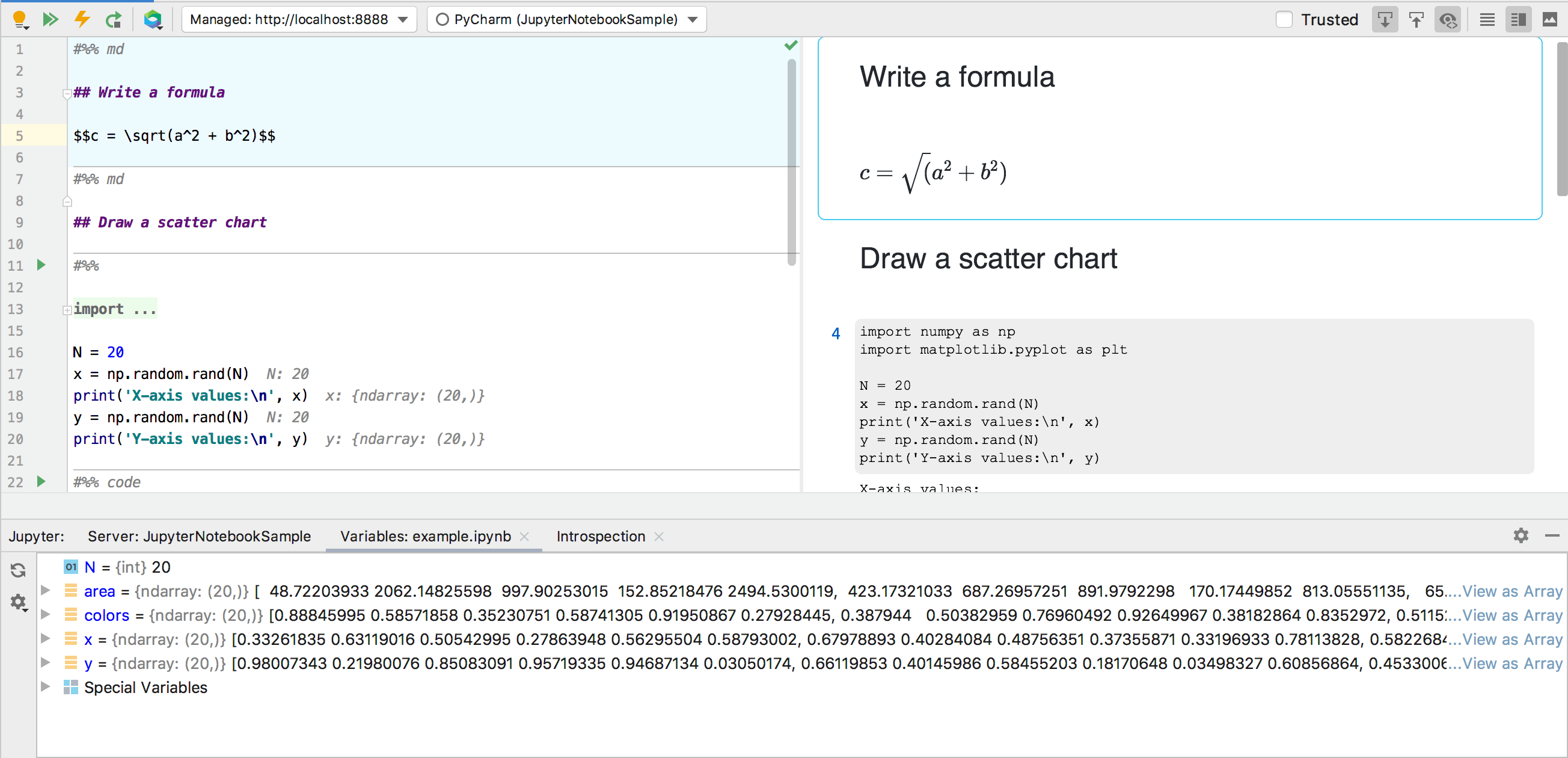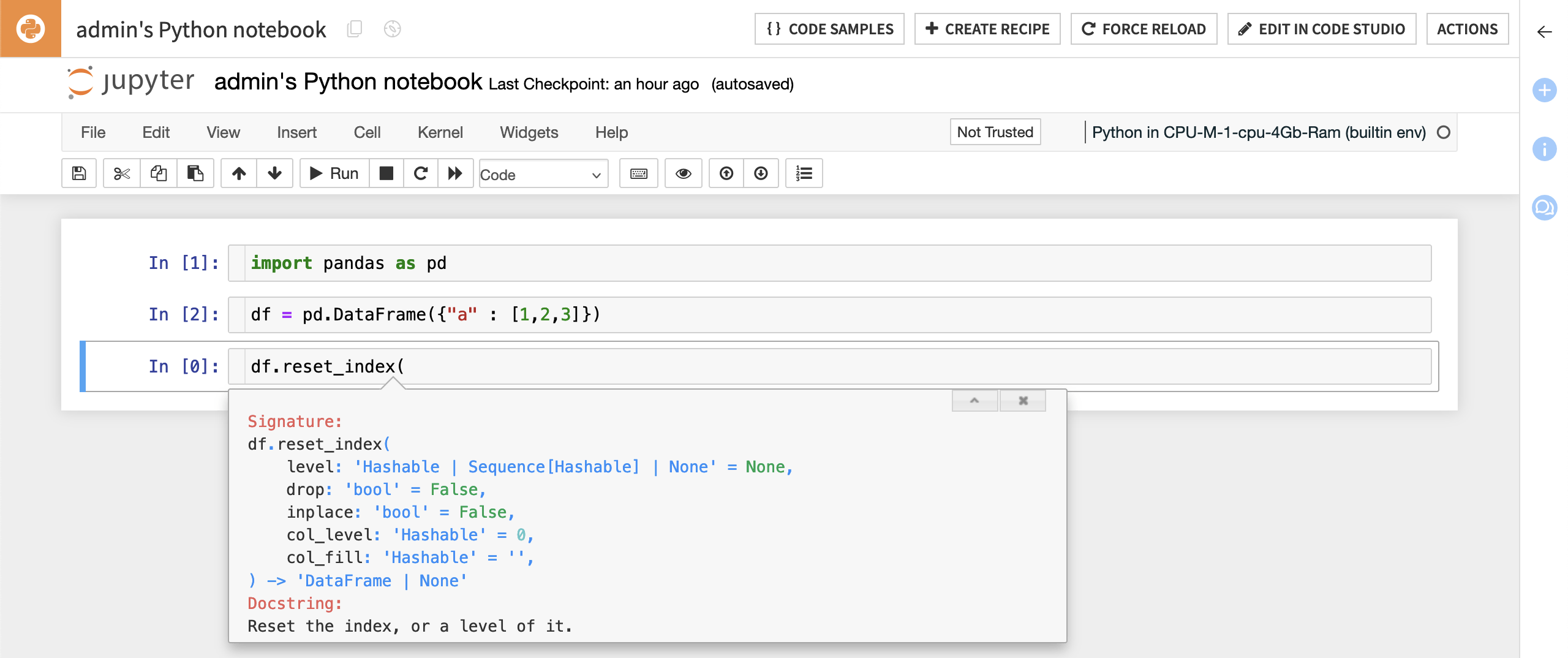

You have to rely on an extension called memory_profiler. If you need to figure out your code's memory usage, there are no built-in tricks in Jupyter. There is another precious resource in addition to time: Memory. The output can be somewhat cryptic, but here we can infer that the list comprehension is taking most (83%) of the total processing time. This way, you'll have more information about where the time is spent.
#JUPYTER NOTEBOOKS CODE#
The %prun magic will time the code and also every submethod call. You may find clues about the bottlenecks of your code, but if you want to dive deeper, you need to go down the call stack and measure everything. If you want to time an entire cell, you can use %%timeit instead. It will simply time a single line of code. The simplest of them is the %timeit magic. While the Jupyter notebook doesn't quite match an actual profiler program, it has some built-in tricks to help with optimizing your performance. Human beings are horrible at estimating time and even worse at finding the performance bottleneck using intuition alone.Ī better approach is to time things, so you can stop guessing.


The worst approach for getting out of that hole is iterating on the code without measuring the impact. #3 Performance and memory profilingĮvery once in a while, you face a situation where your code is too slow. It is fair to say that some design choices in Jupyter are pretty peculiar. SHIFT+TAB+TAB+TAB makes it even bigger!Īlso, note that it doesn't work before you have executed the cell at least once. SHIFT+TAB+TAB does the same but makes the popup larger. You can also see the signature of a method with SHIFT+TAB. Just start typing something into a notebook, press TAB, and voilà. Jupyter is different, and the code completion feature is "hidden" behind the TAB key. They merely wait for you to stop typing and start making suggestions. Most IDEs offer code completion without any hotkeys. Mostly useful for removing the need to memorize method names in a 3rd party library. It looks at what you have typed already and tries to offer suggestions for finishing it. If you need to run multiple shell commands or a very long complicated one, we recommend using the %%bashĬode completion is a common feature in editors for programmers. The great bonus about using the !pip in a notebook cell, instead of running it in the shell, is that the dependency for Pandas is documented for someone who picks up this notebook later on.
#JUPYTER NOTEBOOKS INSTALL#
This will install the latest Pandas package into your currently active Python environment.Īs the installation usually downloads many things and the output is quite spammy, we recommend using the -q parameter with !pip which silences the output.ĭon't worry you'll still get all the errors if the installation is unsuccessful. Jupyter allows you to run these bash commands straight inside a notebook cell using the ! character. The most common scenario is to install Python packages, but it could be anything from calling the cloud provider CLIs to inspecting the contents of a local configuration file. When you are writing code in a notebook - or any editor - there is often a need to run shell commands. In this article, we want to talk about five hacks for faster and easier work in the notebooks, including theme customization.
#JUPYTER NOTEBOOKS HOW TO#
Previously, we have discussed how to run them on any cloud provider. We continue to share our tips and tricks about Jupyter notebooks. Five things to know about Jupyter notebooks Juha Kiili


 0 kommentar(er)
0 kommentar(er)
